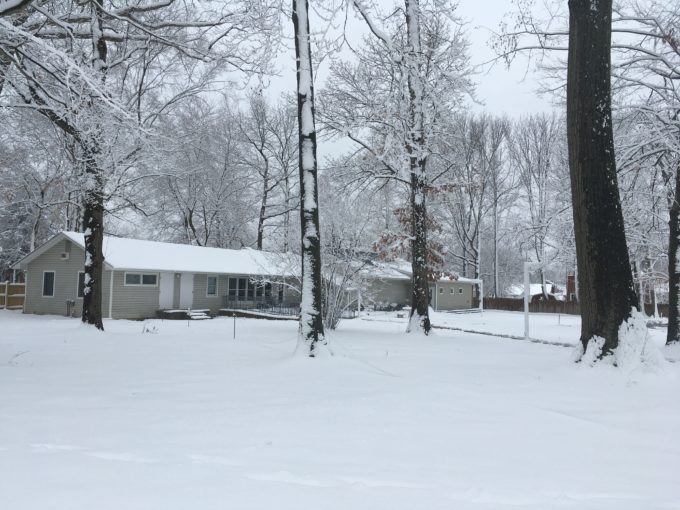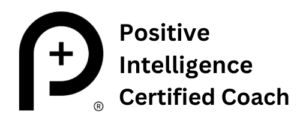
Leaving Dhamma Delaware on April 1, 2018. See below for the snowy first day. And yes, that’s my mini van!
“Great bar conversation — what is harder? A half marathon or staying quiet for 10 days? And how many people actually can answer that with any credibility?”
A friend of mine posed this question a couple of weeks ago when I was packing for my 10-Day Vipassana meditation course at Dhamma Delaware. I had shared a photo memory on Facebook of my friends and I finishing the 2015 DC Rock and Roll Half Marathon, with this reflection:
“As I prepare to leave on Wednesday for my first 10-day silent meditation retreat, I feel a lot of the same emotions. It feels like a challenge that I have trained well for. I know it will be hard. I know I will wonder during the course of it why I signed up for it. I know that simply getting to the starting line represents a win on its own. I know I will come out on the other end stronger, more resilient, knowing more about myself in ways that will serve me going forward. Ten days with no speaking, no technology, no reading, no writing, and yes, no running either. Its own category of endurance race! Wish me luck!”
I’ve been back four days now and am still processing the experience. More than one blog post will be required. Today I’ll start with the easy stuff: what to bring to a residential meditation experience.
Note that I am being careful with my language here – I said meditation “experience” rather than “retreat.” Going away for a period of time to unplug, meditate, and deepen your mindfulness practice may indeed be a restorative retreat, and many options exist for meditation retreats of different lengths.
But the program I just completed was the “10-Day Course in Vipassana Meditation as taught by S.N. Goenke in the tradition of Sayagyi U Ba Khin.” My “before” blog post explains how I landed with this particular option. The Goenke program turned out to have more in common with a boot camp than with what I thought an extended meditation retreat would be like.
Present moment shock treatment would be another way to look at it.
Don’t get me wrong, I’m really glad I did this course. But it was NOT a retreat. The experience was super challenging, physically painful, and grueling much of the time. Being silent was the easy part. But I’ll get into that in my next installment. And don’t worry…the positives outweighed the negatives, with rich lessons in areas that I never expected.
Time and again over the ten day period, I thought about how similar the course was to a very long run or any other type of endurance race. Since I wasn’t allowed to write anything down, I’ll do my best to recall those nuggets.

I managed to snap this photo of my bedroom before our phones got locked up. We brought our own sheets, so this was the “before” shot. Not shown is the fourth bed in the room. You could pull those curtains to have a bit of a screen between the beds, which was nice for privacy if you were splitting your meditation sessions between the hall and the bedroom.
What to Pack for a Residential Meditation Experience
1. Indoor Clothing
Meditation centers generally have similar dress codes: loose, comfortable, casual clothing. Dhamma Delaware was specific in its instructions: “All students should observe the rules for modest dress as outlined in the Code of Discipline. Shorts, tank tops, transparent, tight or revealing clothing, etc. are not permitted. Tights or leggings should be worn only under a knee-length top or shirt.” (The Code of Discipline applies to all of the Goenke centers around the world.)
Since I was driving into the strongest snow storm of the season on registration day (yes, I DID arrive on time), shorts and tank tops were easy to leave behind. I don’t own any knee-length tops or shirts, so my exercise and running leggings wouldn’t work. I brought a couple of pairs of looser sweat pants.
Layering is important, since your body temperature and the meditation hall conditions can really fluctuate. The “Items to Bring” list mentioned “meditation shawl or blanket”, so I threw in a pashmina and a fuzzy throw blanket – two of those blankets, actually, since I was worried for some reason that the bedroom would be cold, which it wasn’t.
I was glad I had both the pashmina and the blanket in the meditation hall. It’s amazing how much temperature regulation you need when you’re meditating for ten hours a day. A lot of the men, and the experienced male meditators in particular, also used shawls and light blankets.
Slippers for inside the buildings are nice to have, since you have to leave your outside shoes by the door. No shoes at all are allowed in the meditation hall.
Members of my running group, Vienna/Oakton Moms Run This Town, post pictures of their outfits, so-called “Flat Mamas,” the night before a race. Here are a couple of my Flat Mamas for inside the meditation hall:


The only other interesting packing guidance was to bring unscented toiletries. I understood why after a couple of days. Even if you didn’t have allergies or special sensitivities to fragrance, your physical senses are heightened in an environment with so few external distractions. A shampoo fragrance could be as much of a thought-provoking distraction as checking your phone.
2. Outdoor Clothing
The blizzard conditions the day I left informed my outdoor clothing choices. Snow boots, gloves, hat—actually several hats, which I threw in in case anybody else needed them since I couldn’t shake that mom habit, forgetting that I wouldn’t be able to ask anybody if they needed a hat—and my son Jacob’s bright red snowboard coat comprised my wardrobe for walking breaks (more on walking breaks in the next post).
That loud coat, which verged on breaking the Noble Silence rule, made me feel wrapped in my family’s love and protection. I forgot to pack any other outside shoes, so when the weather warmed up by the end of my stay, I was still clomping around in the snow boots.

3. Sitting Equipment
I brought my meditation bench, which I set up on my assigned floor mat. Some other people brought their own benches and cushions, but the center also had cushions if you didn’t have your own.
I wondered how people who had never meditated before (and there were plenty of them) fared with the cushions. Personally, the bench has always been more comfortable for me. You were pretty much stuck in your assigned spot unless you asked for permission to move to a chair in the back for the duration of the program. I overheard the male assistant teacher tell someone that it was important to stay in the same location to generate more energy for your meditation.
I’ll get into the physical experience of meditating for ten hours a day in my next post. Suffice it to say, if you’re headed to an extended meditation experience, try to research what’s the most comfortable seating gear for you and bring what you need. The right seat is as important as the right pair of running shoes. (My meditation bench has hinged legs, so fits easily in a bag or suitcase.)

My bench and the blanket I pulled up over my shoulders or kept wrapped around my hips during meditation. This blanket would be too thick for the summer but was nice to have in March in Delaware.
I’ll wrap up this first installment here. The deeper stuff will come soon, after I’ve had a bit more time to process it all. The only teaser I’ll give is that for this introvert, not talking was the easiest part of the experience. I didn’t have an ounce of energy until about day 8 to even think about speaking or writing.
Since my return, I have been engulfed in periodic waves of fatigue, though fewer each day. Between naps, work, and other tasks, I’ve remained aware of the sensory and emotional experiences that continue to bubble up from what was truly one of the most intense consecutive 10 days of my life. I suppose my breast cancer recovery year is high up on that intensity scale, but this was challenging in a completely different way.
To be continued!

Arrival day, March 21, 2018 (before my phone was locked up).
***
If you enjoyed today’s post and are not yet a subscriber, please join my Readers Circle via the sign-up box in the right margin and receive my free ebook Six Playfully Mindful Strategies to Beat Procrastination and Boost Productivity. You’ll also receive updates on my book Blooming into Mindfulness, blog posts, and photography, speaking engagement, and workshop news. Visit https://www.damselwingsphotography.com/ to sign up for special offers on my mindfulness-inspired artwork. Email is much more reliable than social media in getting information to you in a timely fashion, so subscribe to make sure you’re in the loop! (I promise not to share your address or send you spam.)
And if you know someone else who might benefit from an extra dose of calm in their lives, please spread the word! Social media likes and shares are always appreciated.
Finally, if you find typos anywhere on my site, I’d be grateful if you let me know. I hate typos! Contact me so that I can correct the error. Thank you!


